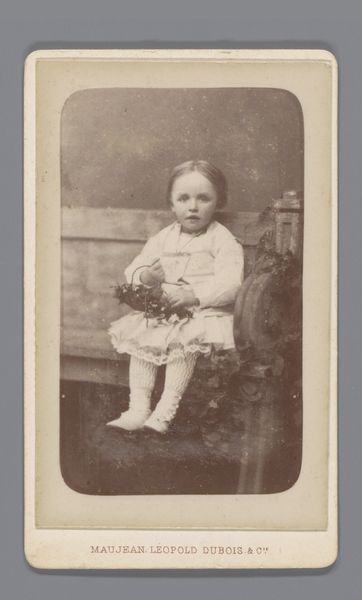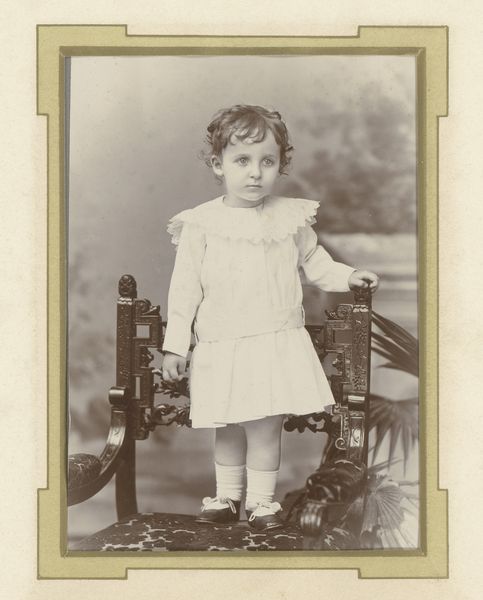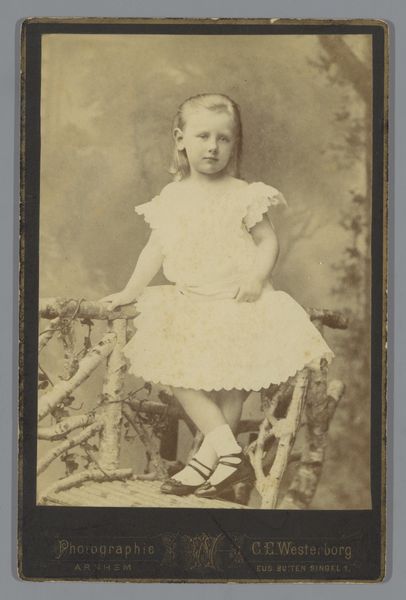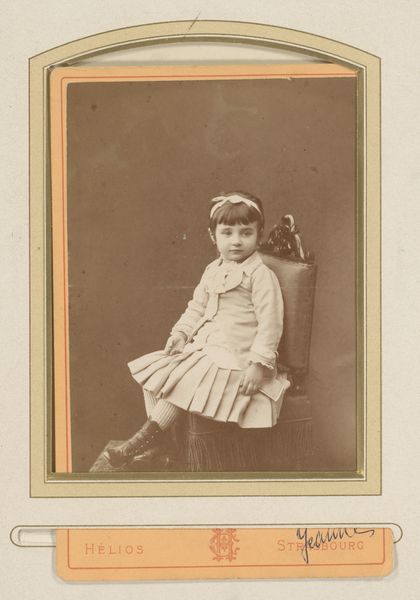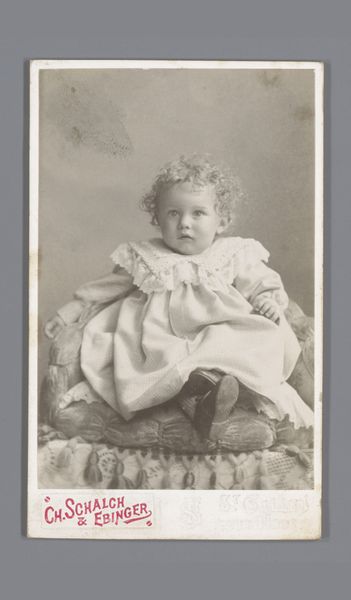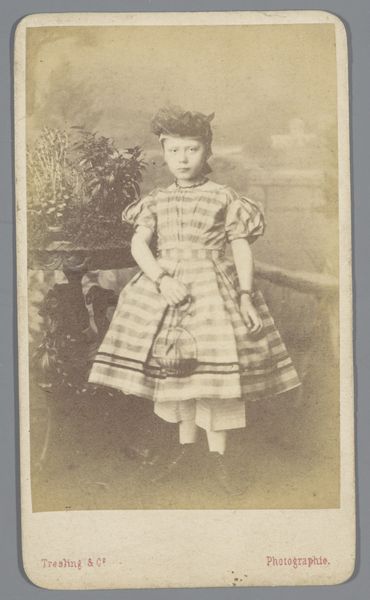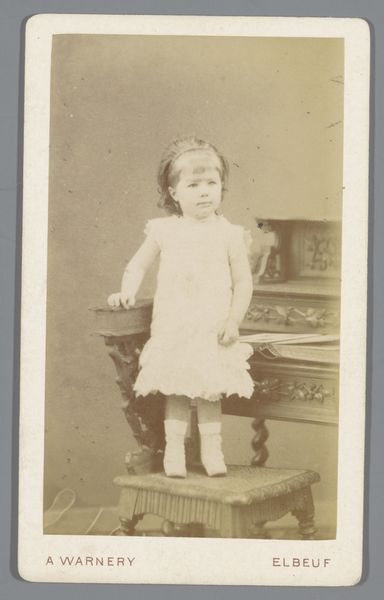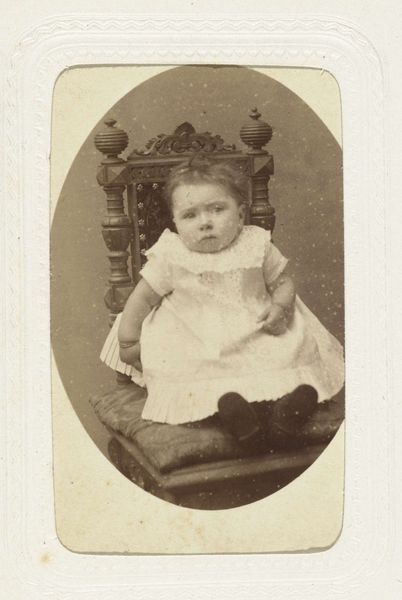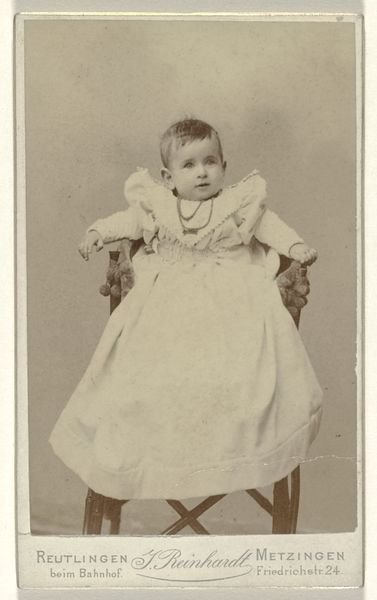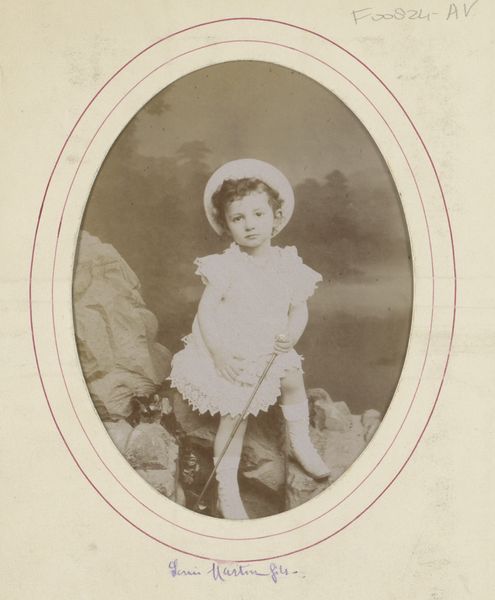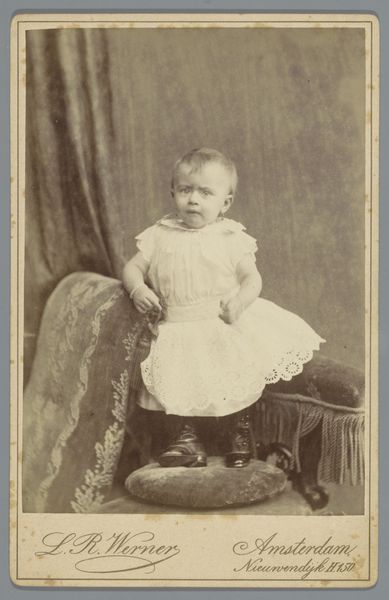
Portret van een zittend meisje in klederdracht met witte muts, met korenaren in de hand 1884
0:00
0:00
paper, photography, pencil
#
portrait
#
paper
#
photography
#
historical photography
#
pencil
#
19th century
Dimensions: height 133 mm, width 93 mm
Copyright: Rijks Museum: Open Domain
Editor: Here we have E. Vogelsang's "Portret van een zittend meisje in klederdracht met witte muts, met korenaren in de hand," from 1884. It’s a photo, possibly with pencil on paper. I’m struck by how staged it feels, yet also strangely intimate. What's your take? Curator: I see this image primarily as a record of labor and its representation. Look at the materials: a photographic print, perhaps lightly worked with pencil, attempting to capture and, in a way, freeze a specific cultural identity. The "klederdracht," the traditional clothing, speaks volumes about prescribed roles and community expectations. Editor: You're focusing on the clothing itself? Curator: Exactly. It’s a constructed image, not just a simple snapshot. The process involved selecting and arranging those clothes, likely manufactured or handmade through significant labor. The korenaren, the ears of grain, emphasize the rural, agrarian context and a potential idealized vision of peasant life. Do you think the photograph romanticizes the reality of labor at that time? Editor: I hadn’t considered that aspect so directly, but you’re right. The image definitely presents a clean, perhaps even glorified, vision of rural life. Curator: And consider the young girl herself. She becomes a vehicle for representing this constructed identity. Photography, as a relatively new medium at the time, plays a critical role in distributing and solidifying these images, impacting both local and broader understandings of culture and labor. The lace and finery cost money at that time, thus suggesting that she has at least partial distance from the work. Editor: It’s fascinating how the materials and the means of production become so central to understanding the image's cultural message. Curator: Precisely! It highlights how seemingly simple images can be deeply embedded in the social and economic fabric of their time. I learned today it makes you reconsider portraiture more as manufactured context and idealized symbol.
Comments
No comments
Be the first to comment and join the conversation on the ultimate creative platform.
